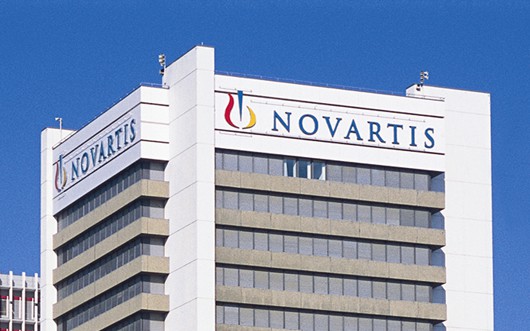
Novartis has joined in the pursuit of an effective therapy for neuropathic pain after acquiring Australian pharmaceutical company Spinifex for an upfront payment of $200m.
The deal, which also includes provisions for clinical and regulatory milestone payments, gives the Swiss pharma major a number of drug candidates for chronic pain conditions including EMA401, a novel angiotensin II type 2 receptor (AT2R) antagonist that has shown activity in a phase II trial involving patients left with persistent pain after a shingles infection.
Shingles is generally caused by a re-activated infection with the chickenpox (herpes zoster) virus and leads to painful skin lesions. In some cases the pain lasts long after the rash and blisters in shingles have cleared up, a condition known as post-herpetic neuralgia (PHN), a painful condition caused by damage to the nerve fibres.
Like other forms of neuropathic pain, PHN can be hard-to-treat and is generally resistant to non-opioid analgesics. Patches containing the local anaesthetic lidocaine can help and some anticonvulsants and antidepressants have shown some activity in some patients. For others, opioid painkillers are the only remedy but these should be used as sparingly as possible to reduce the risk of side effects and addiction.
Novartis notes that 7% to 8% of the adult population suffer from chronic pain linked to neuropathy, and 40% of cases do not respond to first-line treatments and a quarter resistant to second-line therapies. Moreover, persistent pain is commonly associated with poor general health and frequent use of heathcare services.
For years, researchers have been trying to identify pain-relieving drugs that work via different mechanisms and can provide an opioid-free approach to treating neuropathic pain. Spinifex Pharmaceuticals’ A2TR2 antagonists are attractive because they do not affect the central nervous system, exerting their effects only in peripheral nerves, so should be free of the side effects of many of the existing therapies.
Results of the phase II trial of EMA401 in PHN were reported in The Lancet last year. The study was the first to show efficacy of an ATRT2 antagonist in PHN, revealing a significant improvement over placebo and efficacy roughly equivalent to some other drugs used to treat the condition.
The data suggest EMA401 could provide another line of therapy for PHN patients and are particularly significant given that other drugs with novel targets – such as chemokine receptor 2, substance P and p38 mitogen activated protein kinase – have disappointed in clinical trials.
David Epstein, head of Novartis Pharmaceuticals, said: “Neuropathic pain is a chronic and debilitating condition with high unmet need. EMA401 could provide a novel, differentiated treatment approach to provide relief for patients and healthcare providers worldwide.”
The overall pain relief market is predicted to be worth more than $35bn by 2017, predicts market research company GBI Research.
The unmet need in neuropathic pain has made it an attractive target for drug developers – earlier this year for example Biogen paid up to $675m to acquire Convergence Pharma and its pipeline of neuropathic pain candidates based on ion channel modulators.




